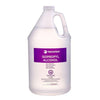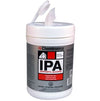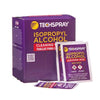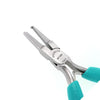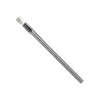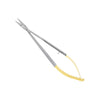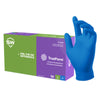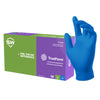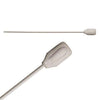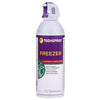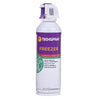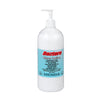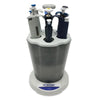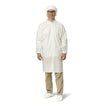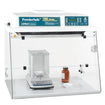- No products in the cart.
Best Practices for Selecting and Using Sterile PPE in 503B Manufacturing
Apr
11
2024
In the meticulous world of 503B outsourcing facilities, where sterile and non-sterile medications are compounded to meet specific patient needs, maintaining aseptic conditions is paramount. Sterile Personal Protective Equipment (PPE) plays a critical role in this pursuit, acting as a physical barrier that safeguards both the integrity of compounded medications and the well-being of personnel.
However, simply having sterile PPE isn't enough. Choosing the right equipment for the task and ensuring its proper use are equally important. This blog delves into best practices for selecting and using sterile PPE in 503B manufacturing, empowering facilities to make informed choices and optimize their aseptic practices.
What is a 503B Outsourcing Facility?
The Drug Quality and Security Act of 2013 introduced a new category of compounding facilities known as 503B outsourcing facilities. These facilities differ from traditional pharmacies in that they can produce large batches of sterile medications without requiring a prescription for a specific patient. This allows them to provide cost-effective solutions for hospitals and other healthcare providers who require compounded medications for various uses. However, to ensure patient safety and product quality, 503B facilities must adhere to stringent regulations set forth by the U.S. Food and Drug Administration (FDA). These regulations include maintaining aseptic processing environments and implementing rigorous quality control measures. Sterile PPE plays a vital role in upholding these aseptic conditions within 503B facilities.
Selecting the Right Sterile PPE: Tailoring Protection to the Task
Not all sterile PPE is created equal. Different tasks within a 503B facility require varying levels of protection. Here's how to identify the most suitable sterile PPE for various activities:
- Material Compatibility: Consider the compatibility of PPE materials with the medications being handled. Certain medications can degrade or interact with specific materials, compromising their effectiveness or sterility. For instance, some chemotherapy drugs require non-latex gloves to prevent degradation.
- Level of Aseptic Risk: Tasks with a higher risk of contamination, such as aseptic compounding within a Biological Safety Cabinet (BSC), necessitate a more comprehensive set of PPE. This might include sterile boot covers in addition to the standard gown, gloves, mask, and shoe covers.
- Comfort and Dexterity: While protection is paramount, comfort and dexterity shouldn't be overlooked. Personnel performing intricate tasks may require gloves with a thinner profile for better tactile sensitivity.
Here are some key considerations for specific types of sterile PPE:
- Sterile Gowns: Opt for gowns made from breathable materials like SMS (Spunbond-Meltblown-Spunbond) fabric, which provide a balance between protection and comfort. Consider gowns with knit cuffs for a tighter fit at the wrist.
- Sterile Gloves: Choose powder-free and latex-free gloves to minimize the risk of allergic reactions and product contamination. Glove selection should also consider the type of medication being handled and the required level of dexterity. For tasks requiring high dexterity, thinner nitrile gloves might be suitable.
- Sterile Face Masks: N95 respirators offer superior protection against airborne contaminants. However, for low-risk activities outside the BSC, surgical masks may suffice. Ensure proper fit to maximize filtration efficiency.
- Sterile Shoe Covers: Disposable shoe covers made from non-woven materials are ideal for preventing floor contaminants from entering the sterile field.
Remember: Consulting with a qualified industrial hygienist can provide valuable insights into selecting the most appropriate sterile PPE for specific tasks within your 503B facility.
Donning and Doffing with Precision: Ensuring Proper PPE Use
The effectiveness of sterile PPE hinges not just on its selection but also on its proper use. Here are some best practices for donning and doffing sterile PPE:
- Establish a Designated Donning/Doffing Area: A clean, well-lit space with minimal traffic flow is ideal for putting on and removing PPE.
- Follow a Standardized Procedure: Implement a clear, step-by-step protocol for donning and doffing PPE, ensuring consistency among personnel. Visual aids like posters or videos can be helpful training tools.
- Minimize Contamination Risk: Perform hand hygiene before donning PPE and avoid touching the outside of sterile garments. Maintain a sterile field during the process.
- Doffing Sequence: Remove PPE in the reverse order of donning, carefully folding inward to minimize contamination of the inside surface. Dispose of used PPE in designated waste receptacles.
Remember: Regular training and competency evaluations are crucial to ensure personnel proficiency in proper PPE use.
Maintaining Aseptic Conditions: Beyond the Basics
Selecting and using sterile PPE effectively is just one piece of the puzzle. Here are some additional practices to bolster aseptic conditions in your 503B facility:
- Environmental Monitoring: Regularly monitor air quality and surfaces for microbial contamination to identify potential issues.
- Proper Equipment Maintenance: Ensure Biological Safety Cabinets (BSCs) are functioning optimally and undergo regular certification.
- Continuous Improvement: Regularly review and update aseptic practices based on the latest industry guidelines and best practices.
By implementing these best practices for selecting and using sterile PPE, 503B outsourcing facilities can create a robust barrier against contamination, safeguarding the integrity of compounded medications and ensuring patient safety. Remember, aseptic practices are an ongoing process, requiring continuous vigilance, education, and adherence to the highest standards. By prioritizing a culture of quality and aseptic technique, 503B facilities can fulfill their vital role in delivering safe and effective medications to patients in need.
For over 40 years, Lab Pro Inc. is your steadfast source for premium cleanroom wipes, hand tools, lab equipment, chemicals, and PPE apparel. Trusted by 503B outsourcing facilities, aerospace industries, medical device companies, and laboratories globally, we epitomize exceptional quality in every product. Experience the convenience of next day service in California. Contact us online or at 888-452-2776 to explore solutions tailor-made for the laboratory industry. Elevate your experiments with Lab Pro Inc. – your partner in precision and excellence.







